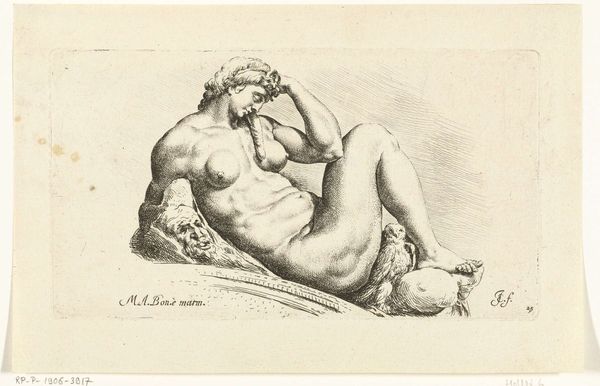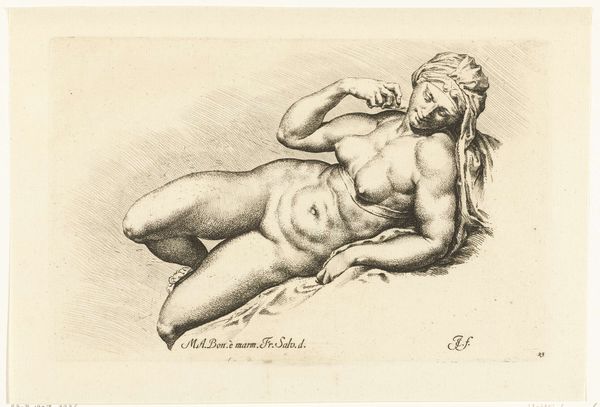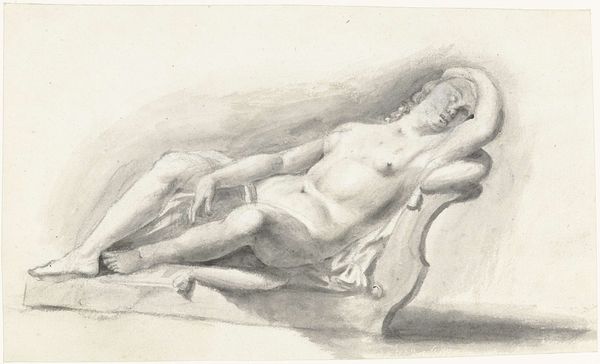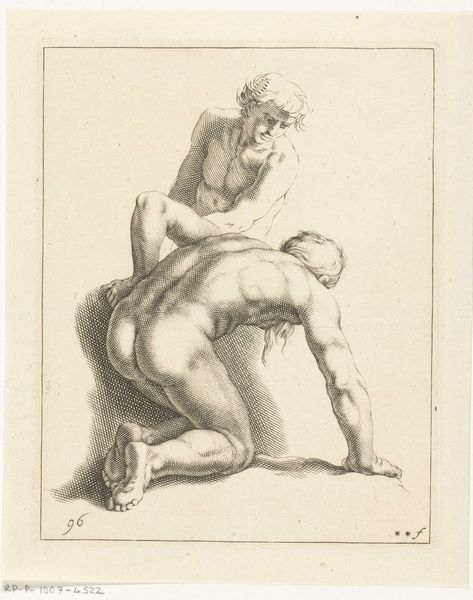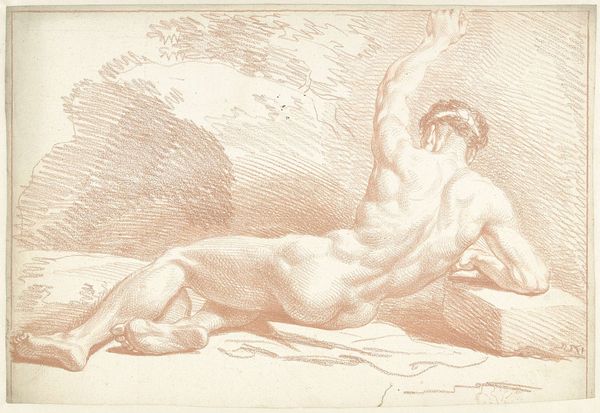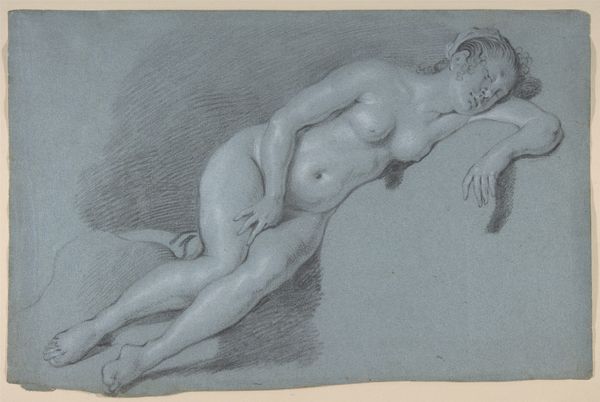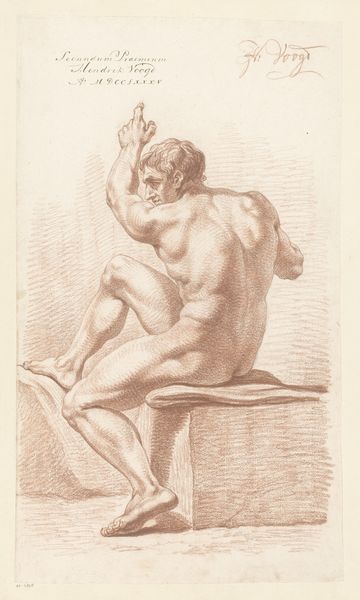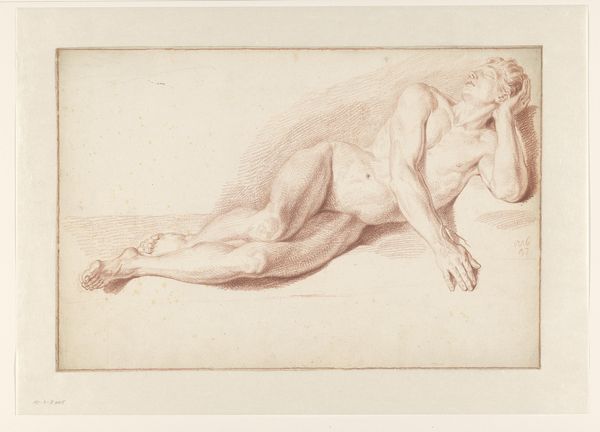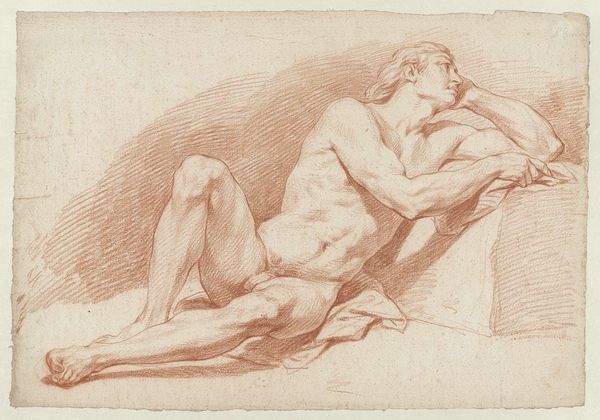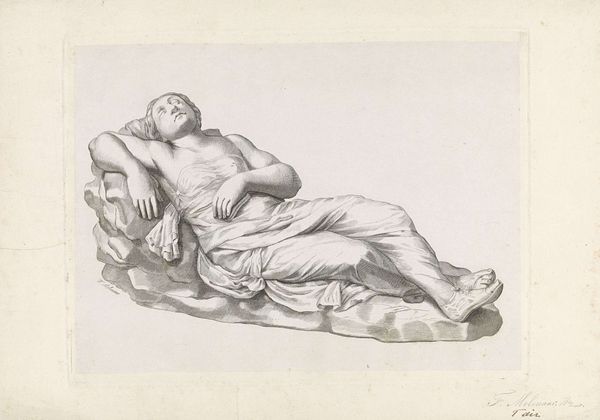
print, etching
#
baroque
# print
#
etching
#
figuration
#
history-painting
#
nude
Dimensions: height 142 mm, width 233 mm
Copyright: Rijks Museum: Open Domain
Curator: Looking at this print, “Aurora liggend op een stenen boog” created by Jan de Bisschop between 1668 and 1671, I can’t help but feel this profound sense of quiet contemplation, as if she's dreaming, and we're intruding. Editor: Yes, a dreamy quality pervades this etching. And yet, Aurora, the Roman goddess of dawn, reclining nude…it's a loaded image isn't it? The male gaze immediately springs to mind, how it positions the female body as an object of spectacle and desire. Curator: Well, perhaps! I feel that Jan de Bisschop aimed more for a poetic sensuality rather than blatant objectification. He invites the viewer to connect with her state of vulnerability, not in a vulgar manner, but something akin to sharing a reverie. Don't you find the lines around her leg and face to show something beyond body? Editor: That's an interesting read, because Baroque art often used the female nude to express allegory and embody idealized beauty standards. We see Aurora placed, literally, on a pedestal, an archetypal fantasy that denies autonomy. But at the same time, do you feel that her gesture of recline embodies power, a rejection, a conscious claim to visibility in a public and largely masculine space? Curator: That's it, yes! Maybe her reclined pose indicates defiance—perhaps even ownership, she seems totally at ease, rather unconcerned about an observing audience. Her eyes, gazing gently up and to her right, invite more a sympathetic connection to her story rather than any ogling objectification of flesh. Don't you feel the arch provides that sense of security, like the embrace of dawn for those who cannot see the darkness. Editor: Possibly. I can see your point—the artwork invites multifaceted interpretations of Aurora, whether goddess or mortal woman, whose strength rests not just on power, but vulnerability. A celebration and an interpretation, no doubt a revolutionary concept for the time period. Curator: The use of light and shadow create an intimate setting, enveloping us. Even through lines we gain access to her vulnerability, her very essence. Thank you for showing me some other light in this vision. Editor: Thank you, too. I think examining these perspectives together allows the work to engage us both critically and personally.
Comments
No comments
Be the first to comment and join the conversation on the ultimate creative platform.
